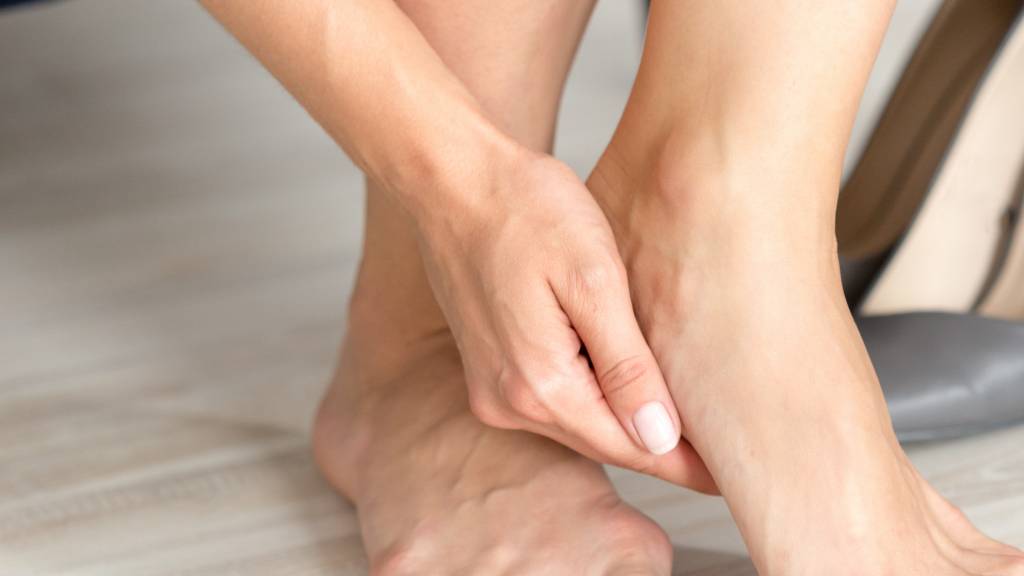Hallux Valgus: Causes, Symptoms, and Treatments
Bunions: Causes, Symptoms and Treatment Options
A bunion (hallux valgus) is one of the most common foot deformities, affecting a significant portion of the population – especially middle-aged women. This condition is characterised by a bony bump on the inner side of the foot and can cause persistent pain and discomfort, often limiting daily activities and overall quality of life. Understanding the underlying causes, recognising the symptoms and exploring the available treatments is key to managing this condition effectively.
Anatomy and Mechanism
To understand bunions, it’s important to consider the anatomy of the foot. The big toe, or hallux, connects to the first metatarsal via the metatarsophalangeal joint. In a healthy foot, these structures are properly aligned. In the case of hallux valgus, however, the first metatarsal shifts inward toward the midline of the body, while the big toe deviates outward, toward the second toe. This misalignment creates the characteristic bump on the side of the foot, commonly referred to as a bunion.
Over time, the deformity becomes more pronounced as soft tissues such as ligaments and tendons adapt to the new positioning, making the condition increasingly difficult to correct without medical intervention.
Risk Factors and Causes
The development of bunions is typically multifactorial, with a combination of influences contributing to the condition:
-
Genetic predisposition: A family history of bunions is often present, suggesting a hereditary link
-
Foot structure: Certain anatomical traits – like a short first metatarsal or ligament laxity – can predispose someone to bunions
-
Improper footwear: Tight shoes, pointed toes or high heels apply abnormal pressure on the big toe, accelerating misalignment
-
Medical conditions: Disorders such as rheumatoid arthritis and some neuropathies may contribute to joint deterioration
-
Foot trauma: Previous injuries to the big toe joint can disrupt its biomechanics
-
Biomechanical factors: Poor posture or uneven weight distribution while walking can increase strain on the first metatarsal
Symptoms and Clinical Presentation
Symptoms of a bunion vary depending on the severity of the deformity, but often include:
-
Pain: Especially at the site of the bony bump, often worsened by walking or wearing shoes
-
Inflammation: The area may become red, swollen and warm due to ongoing irritation
-
Joint stiffness: Over time, the metatarsophalangeal joint can lose flexibility
-
Calluses: Repeated pressure over the bump can lead to painful skin thickening
-
Toe deformities: The big toe may overlap the second toe, causing conditions such as hammer toes
-
Altered gait: Pain and deformity can change how a person walks, possibly leading to secondary issues in the knees, hips or spine
Diagnosis and Clinical Assessment
Diagnosis of hallux valgus requires a thorough evaluation by a foot and ankle specialist:
-
Patient history: Information on previous injuries, family history and symptoms is reviewed
-
Physical examination: The shape of the foot, joint mobility and presence of inflammation or calluses are assessed
-
Functional assessment: The gait is observed to detect abnormalities in foot mechanics
-
Diagnostic imaging: Weight-bearing X-rays are essential to measure the severity of the deformity and guide treatment planning
Treatment Options
Bunion treatment can be conservative or surgical, depending on the severity of the deformity and how it affects the patient’s life.
Conservative Treatments
-
Comfortable footwear: Wearing shoes with ample space for toes and forefoot can reduce pressure and relieve pain. Orthopaedic stores provide models designed specifically for bunion management and prevention
-
Orthotics: Custom insoles and toe spacers help redistribute weight and relieve pressure. Pressure analysis (baropodometry) is used to optimise support and improve posture
-
Physical therapy: Specific exercises improve muscle strength and flexibility in the foot, which may slow the progression of the deformity
-
Pain management: Ice packs, non-steroidal anti-inflammatory drugs (NSAIDs) and magnetotherapy can reduce inflammation and control pain
Surgical Treatment
Surgery is considered when conservative methods are no longer effective. The most common procedures include:
-
Osteotomy: Cutting and realigning the first metatarsal to correct the deviation
-
Arthrodesis: Fusion of the joint in severe cases to provide long-term stability
-
Bunionectomy: Removal of the bony bump, often performed alongside other corrective procedures
-
Soft tissue repair: Tendon realignment or release to restore balance across the joint
The choice of surgery is carefully evaluated by the orthopaedic surgeon, taking into account factors such as age, activity level and overall health.
Prevention and Long-Term Management
Although bunions are not always preventable, certain steps can reduce the risk or slow progression:
-
Proper footwear: Choose shoes with enough toe space and avoid prolonged use of heels
-
Supportive insoles: Custom orthotics help distribute weight more evenly and maintain a healthier gait
-
Healthy weight: Reducing excess body weight lessens stress on the joints
-
Foot-strengthening exercises: Regular training enhances biomechanical efficiency
-
Routine check-ups: Periodic visits to a specialist allow early detection and intervention
Final Recommendations
Hallux valgus is a complex deformity that requires a tailored approach. Understanding the mechanics behind the condition, combined with early diagnosis and the right treatment, can significantly improve patient outcomes.
For a comprehensive evaluation and customised treatment plan, we recommend consulting a specialist in orthopaedics. If you are experiencing bunion-related discomfort, visit our Orthopaedic Centre at Via Taramelli 21/23, Bergamo, or get in touch with us today.
? You can reach us from Monday to Saturday, 9 am to 12.30 pm and 3 pm to 7 pm, at 035 212110
? Or email us at: info@ortopediazambelli.it
Our team is here to help.
All the news

